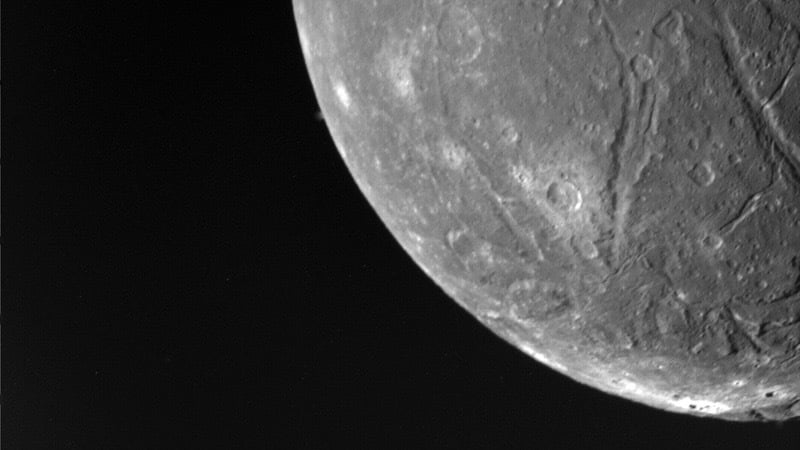
A recent study has revealed that one of the moons of Uranus, known as Ariel, may have harbored an ocean approximately 100 miles deep. This depth is nearly 40 times greater than that of the Pacific Ocean. The research indicates that Ariel could still possess remnants of this ancient ocean, fundamentally altering our understanding of the moon’s geological history.
New computer simulations suggest that Ariel developed this ocean when its orbit was more elliptical, allowing Uranus’ gravitational forces to generate the necessary tidal heating. This internal heat could have melted parts of Ariel’s icy crust, leading to the formation of a subsurface ocean. Caleb Strom, the first author of the study published in the journal Icarus, explained that the tidal heating would have created a thin ice shell, which would be subject to flexing and cracking. He noted, “It is less that the ocean is causing the cracks than that the ocean is a result of the tidal heating.”
The intriguing features of Ariel’s surface, including wide canyons, long fractures, and smooth plains, were initially observed in images from NASA’s Voyager 2 spacecraft in 1986. These characteristics have led scientists to consider whether Ariel could be part of a growing list of icy moons in the outer solar system that may harbor liquid water beneath their surfaces.
Implications for Astrobiology
If confirmed, these findings could indicate that Ariel shares similarities with other celestial bodies like Saturn’s Enceladus and Jupiter’s Europa, which are known to have conditions that may support life. Understanding how Ariel’s interior has heated, cooled, and resurfaced could provide valuable insights into how habitable environments might exist far from the Sun.
Uranus itself, located approximately 1.8 billion miles from Earth, has gained attention recently due to the discovery of a new moon, bringing its total count to 29. Once viewed merely as a bright, featureless planet, Uranus has become more intriguing thanks to recent studies and observations made by the James Webb Space Telescope, which have revealed its complex composition of water, methane, and ammonia, encasing a small rocky core.
Historical Context and Future Research
The study of Ariel follows a previous paper by the same research team that suggested similar oceanic features on another Uranian moon, Miranda. Tom Nordheim, a co-author from the Johns Hopkins University Applied Physics Laboratory, stated, “We are finding evidence that the Uranus system may harbor twin ocean worlds.” This assertion underscores the necessity of further exploration of the Uranus system.
The tidal effects believed to have formed the ocean within Ariel likely occurred 1 to 2 billion years ago. This timing corresponds with a gravitational interaction with another moon of Uranus, a phenomenon known as resonance. As the resonance effect waned, Ariel’s orbit might have become more circular, leading to a cooling of the moon and the potential refreezing of the hypothesized ocean.
Researchers are also exploring the possibility that many of Uranus’ moons may conceal oceans beneath their icy surfaces. Spectroscopic analyses have detected ammonia and carbon compounds on Ariel’s surface. These compounds tend to break down quickly in space, suggesting that they likely originated from the moon’s interior, indicating ongoing geological processes.
While some cracks on Ariel’s surface may have originated from tidal forces, Strom noted that other factors could be at play. The thickening of the ice shell due to freezing water or potential cryovolcanic activity could also explain the surface features. Although the concept of cryovolcanism—where substances like water or ammonia erupt from underground—remains controversial, Strom emphasized its relevance to understanding Ariel’s geological history.
As scientists continue to investigate these icy moons, the prospect of discovering extraterrestrial life or understanding the conditions that sustain it remains a tantalizing possibility. Further exploration of the Uranus system may yield significant revelations about our solar system and the potential for life beyond Earth.





